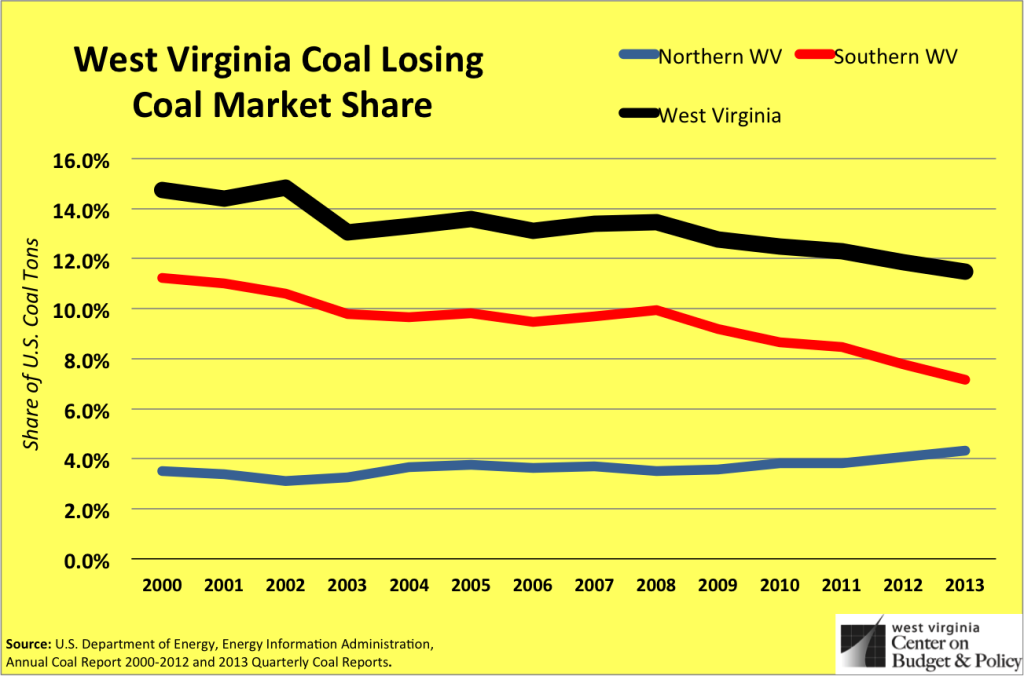In the last post, I looked at the rapid decline in coal mining productivity in West Virginia. This post will show how the decline in productivity has played out over the last few years and how it is has resulted in West Virginia losing coal market share with other coal producing regions.
#3 West Virginia coal is losing national coal market share
While coal’s share of electric power generation has declined nationally, West Virginia’s share of steam coal that is being used for electric power generation has also declined. In 2008, West Virginia shipped 97.7 million tons of coal to the electric power sector compared to just 51.8 million in 2013. Between 2008 and 2013, West Virginia’s share of U.S. coal being shipped to the electric power sector dropped from 9.6 percent to 6.6 percent. In contrast, Wyoming’s share of coal being used for electric power in the U.S. rose from 44.3 percent to 47.4 percent over this period and Illinois’s share grew from 2.3 percent to 4.4 percent. West Virginia’s shrinking share is even more dramatic when you look at the southern part of the state. In 2008, southern West Virginia accounted for 6.3 percent of the nation’s coal used for electric power generation. By 2013, southern West Virginia’s share had dropped to just 2.5 percent. This means that West Virginia is being out competed by other states for providing steam coal that is used for electric power generations in the United States.
West Virginia is doing much better here. Between 2008 and 2012, the state has increased the number of tons of coal it is exporting from 26.4 million to 47.5 million. As the table below highlights, this growth is driven primarily by the increase in southern West Virginia foreign exports, which has nearly doubled over this period. While West Virginia has seen growth in its coal exports, so have other states, most notably Illinois, Alabama, and Montana. As a share of total U.S. coal exports, West Virginia has seen a slight reduction between 2008 and 2012 of two percentage points. It is also important to recognize that most of West Virginia’s exports are dependent on the internal market for metallurgical coal which is highly volatile and is heavily dependent on growth rates of countries like India and China.
Looking at the big picture, the share of U.S. coal being produced in West Virginia has shrunk considerably over the last 14 years. In 2002, nearly 15 percent of the coal produced in the U.S. came from West Virginia. Today, only 11.5 percent. As the graph below shows, this is driven by the relative decline in southern West Virginia coal production. The share of U.S. coal produced from northern West Virginia has risen over the last decade and a half, from 3.1 percent in 2002 to 4.3 percent in 2013.

What this all makes clear is that the decline of coal production in southern West Virginia is happening as other coal basins and states have increased their market shares. There is a national ‘war on coal’ when other regions are out competing West Virginia and our production losses are being replaced by other states.
In the next post, I will look at one of the other central reasons why coal is declining in West Virginia – the growth of natural gas.